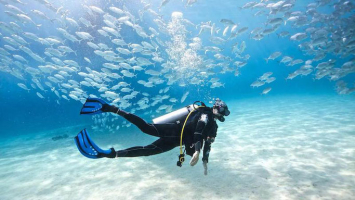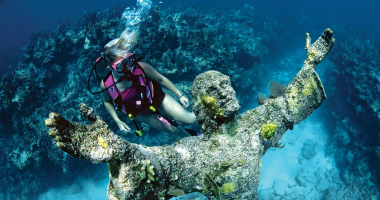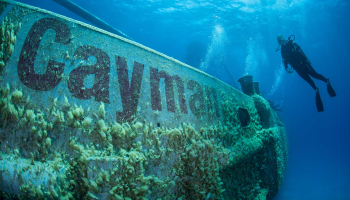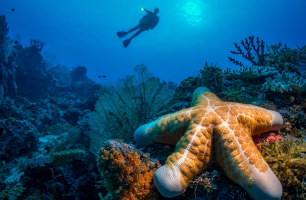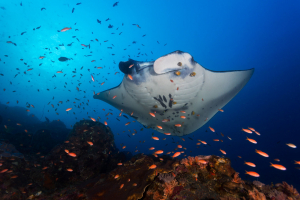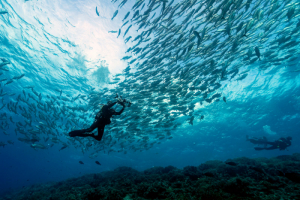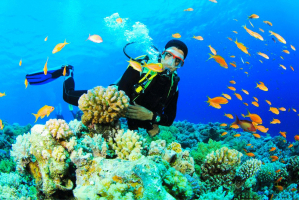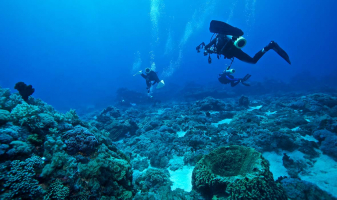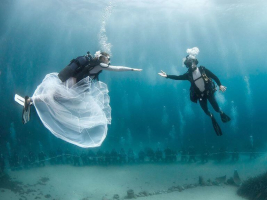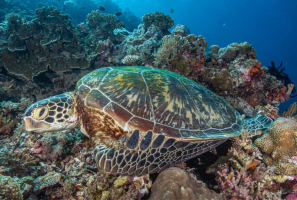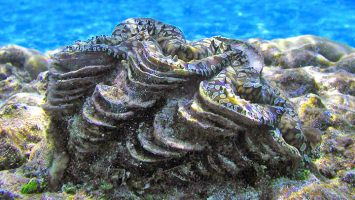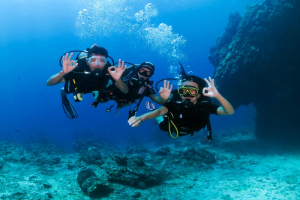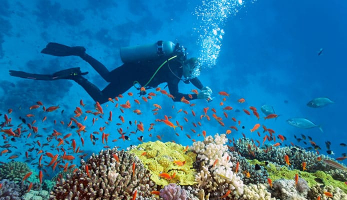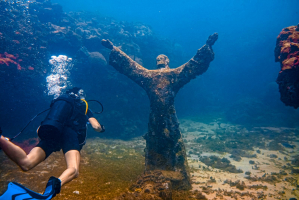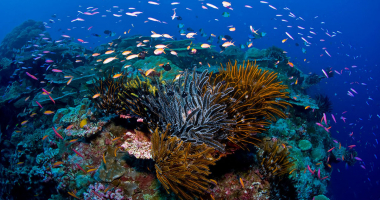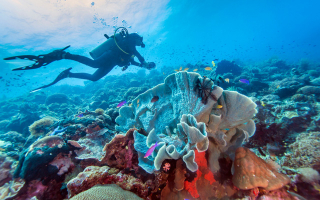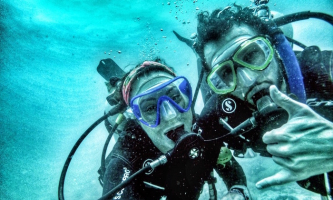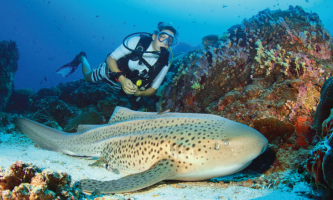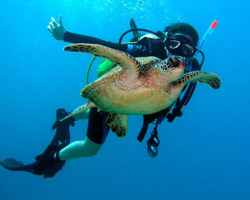Top 19 Best Dive Sites in the Bahamas
If you've ever longed to dive in warm, dazzling blue seas overflowing with gorgeous reef fish and sharks, the Bahamas should be on your scuba diving bucket ... read more...list. The Bahamas islands are home to some of the world's most magnificent diving locations, attracting visitors from all over the world to enjoy the warm seas. Whether you are an expert scuba diver who plans to spend most of your vacation beneath or have friends and family who prefer to stay on the surface, the Bahamas can accommodate everyone. This article shows you about the best dive sites in the Bahamas
-
Lost Blue Hole is one of the best dive sites in the Bahamas. The blue hole is an excellent diving spot for both novice and expert divers. Some parts remain at 14 meters, whereas Advanced qualified divers can descend to 31 meters. A healthy reef wall is a home to a varied assortment of marine animals.
- Divers will be able to see IUCN Near Threatened Blacknose sharks at this biodiverse dive location.
- Depths to suit all levels of expertise
- Boat access is simple.
What you will see: This reef is teeming with a diverse array of creatures. Aside from the flourishing corals, you will also encounter large schools of fish, stingrays resting on the sandy bottom, and other genuinely rare species. Keep a lookout for tobacco fish, coupled up gobies, and jawfish, all of which dart around divers.
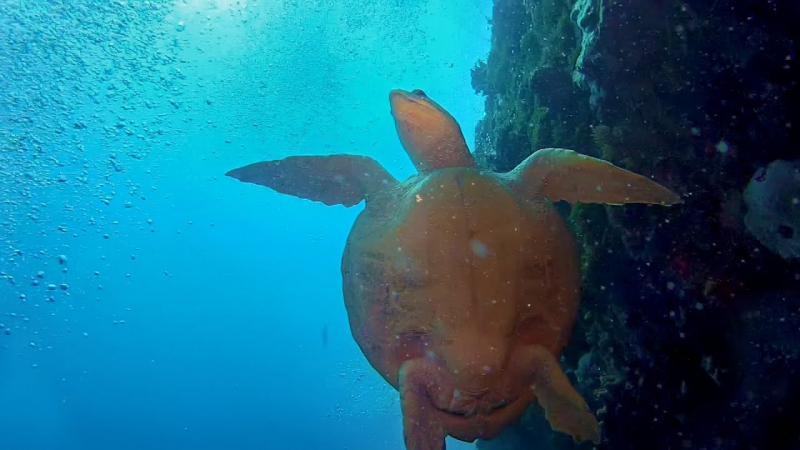
youtube.com 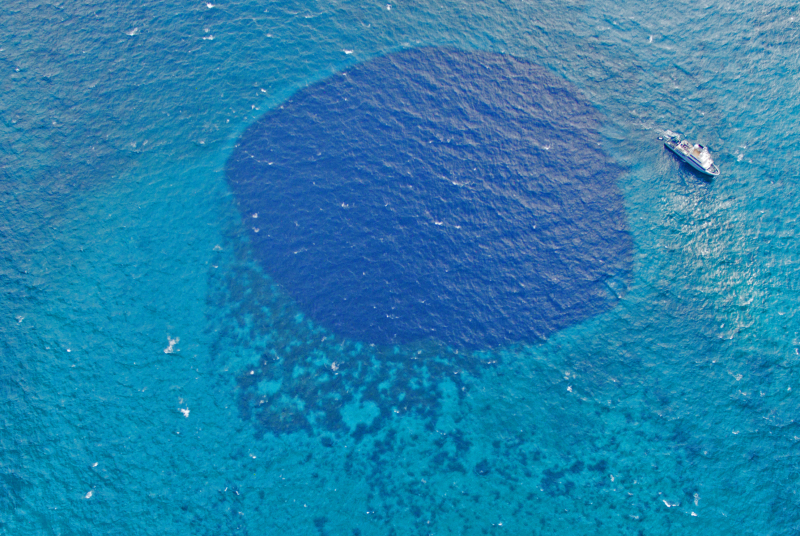
news.uaf.edu -
This shallow dive location covers a large region with several wrecks, spectacular reef cliffs, and thriving coral reefs. This is where Stuart Cove's Dive Bahamas has the Shark Arena, where divers may witness Caribbean Reef sharks in a feeding frenzy. Sharks have been coming here to eat for decades, and operators and regular visitors can plainly distinguish individuals. The dive location is on a sandy bottom at roughly 11 meters depth, making it fairly accessible to divers of all skill levels.
- Diverse diving spot with reefs and wrecks.
- Coral reefs that are healthy and teeming with fish
- Stuart's Cove Dive Bahamas offers shark-feeding dives.
What you will see: Sharks. The Caribbean Reef Sharks will congregate at this location since they have learned that the presence of divers and dive boats implies they will be fed. While the food they get is modest in calories and does not interfere with their regular foraging routines, they are nonetheless enthusiastic and cluster at this diving location for the chance to eat a tuna head.
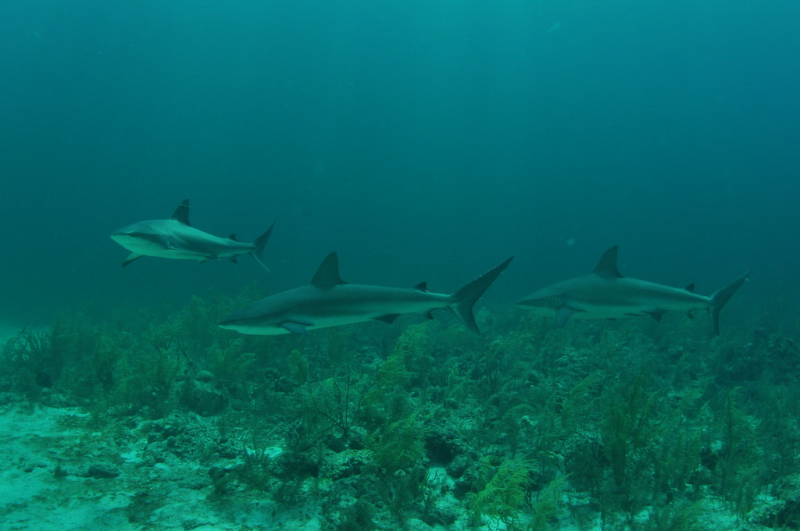
flickr.com 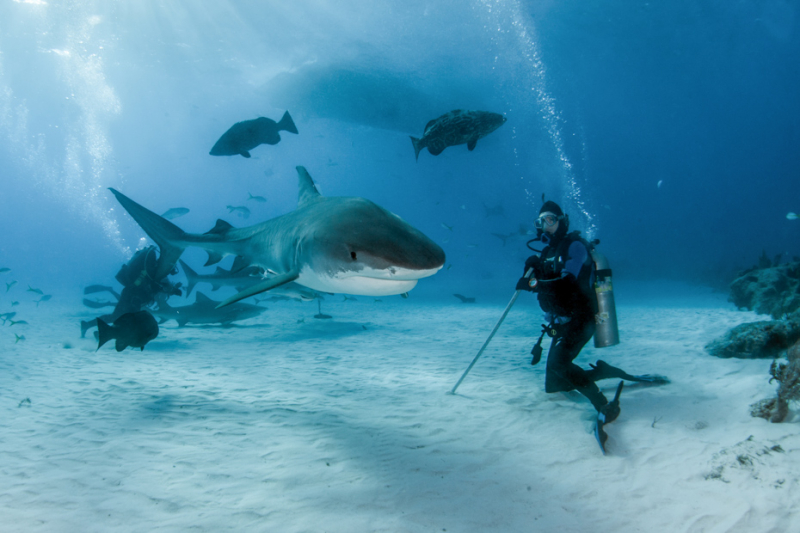
bahamasairtours.com - Diverse diving spot with reefs and wrecks.
-
When it comes to the best dive sites in the Bahamas, professional divers always mention The Towers. This pinnacle diving site boasts massive coral pinnacles that extend 18m from the ocean's bottom to the surface. They are covered in soft and hard coral growths, as well as hundreds of species that have congregated on these remarkable formations.
- Pinnacle dive with a vast array of soft and hard corals
- Turtles, sharks, and rays may all be seen swimming in the area.
- Tunnels and tunnels to entice more daring divers
What you will see: If you are a keen macro photographer, bring your camera and lighting to this location. You will be greeted with a stunning diversity of coral life, as well as numerous fish and invertebrate species seeking sanctuary in this unique habitat.
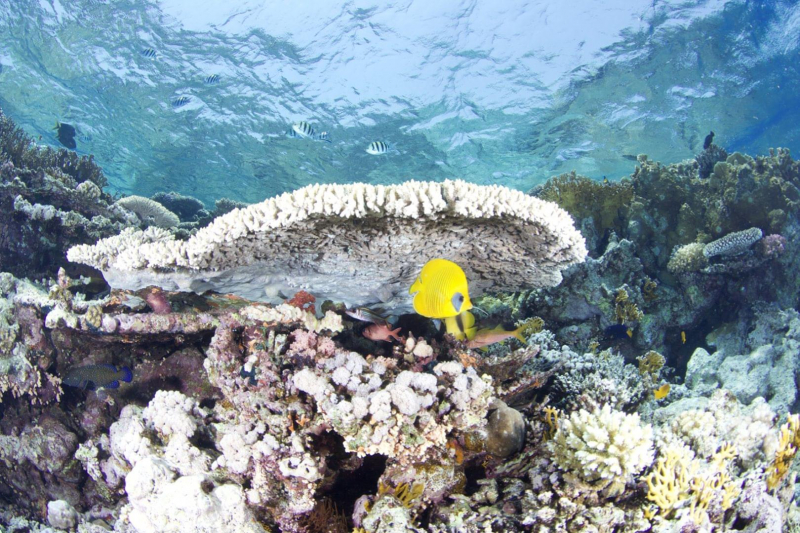
padi.com 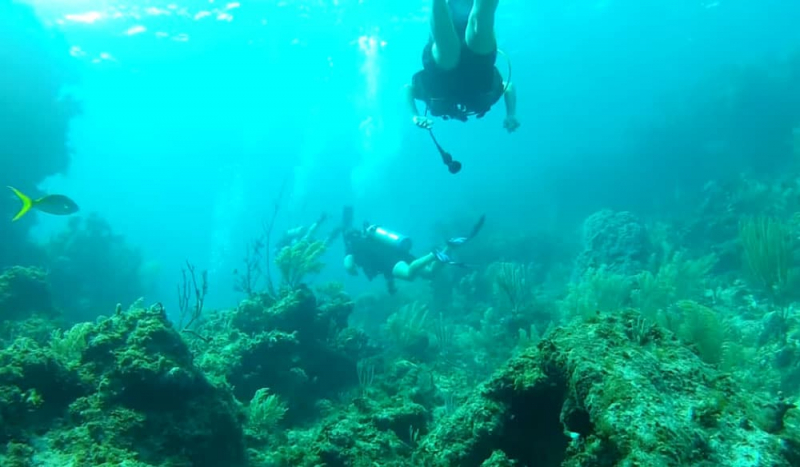
divein.com -
The most renowned diving location in the Bahamas is located off Walker's Cay on the Bahamas' northernmost island. It is a shark-infested location where divers may view sharks in their native homes. It's mostly Caribbean reef sharks, with a few catsharks thrown in for good measure. Shark Rodeo is one of the best dive sites in the Bahamas. The Shark Rodeo, created by Gary Adkison and Barry Albury, managers and assistant managers of Walker's Cay Undersea Adventures, is a once-in-a-lifetime opportunity to see wild sharks in their natural habitat. The event attracts up to 100 Caribbean reef sharks, black-tipped reef sharks, and nurse sharks. The "chumsicle," a frozen confection of discarded fish pieces recycled from the catch of Walker's Cay's sportfishing boats, is the secret to the Shark Rodeo. After the divers have gathered on the bottom, the chumsicle is suspended in mid-water. This feeding strategy regulates the pace of the rodeo by regulating the degree of the food stimulant and also prevents any relationship between the divers and the meal.
- Shark Feeding Dive, where you can view up to 100 sharks at the same time
- Dive is simple and current-free.
- One of the most well-known diving spots in the Bahamas.
What you will see: Larger fish, such as sharks. Pelagic predators congregate in this region, so keep a lookout for sharks, rays, jacks, and other species.
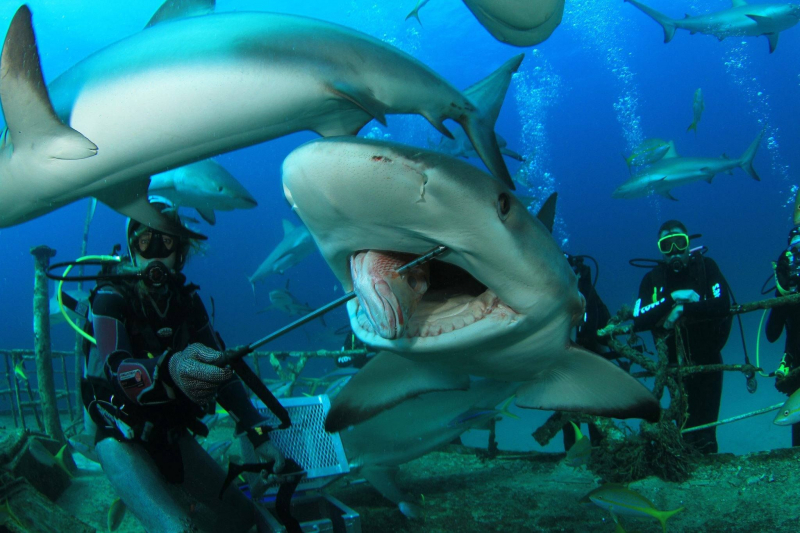
pinterest.com 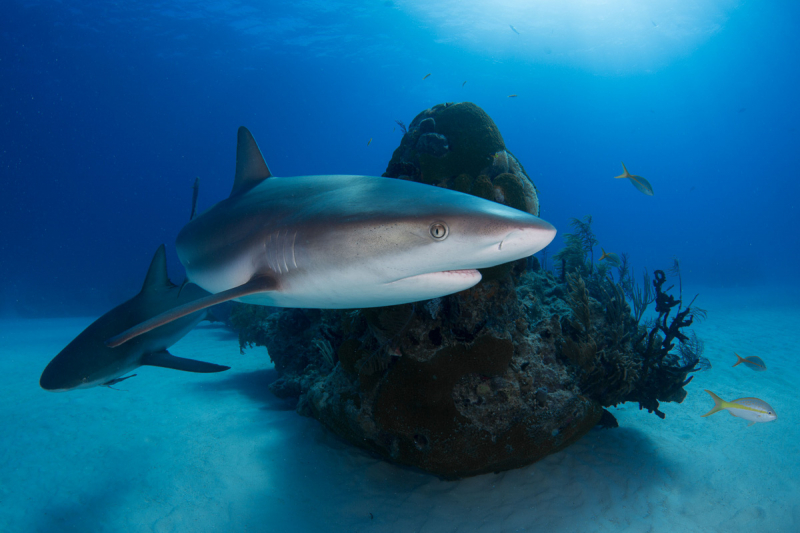
zubludiving.com -
If you're a James Bond fan, you'll definitely want to add this diving location to your list of dives to do while in the Bahamas. Because of the clear underwater conditions and lack of currents, the Bahamas has served as the setting for numerous Hollywood films. These magnificent reefs and wrecks have appeared in several James Bond films, most notably in Sean Connery's renditions of the movie. The Vulcan Bomber can be seen in the 1965 film "Thunderball," while the Tears of Allah disaster can be seen in the 1983 Bond film "Never Say Never Again."
- Famous filming locations for Sean Connery’s James Bond movies
- Beautiful, and impressive fish wrecks
- Easy diving with plenty to photograph
What you will see: In addition to being in the same underwater location where renowned movie actors and legendary films were filmed, the simple dive sites have just 12m of water and gorgeous marine life. There is a lot of coral growth on the wrecks that have been in the sea for a long time, offering photographers much to capture.
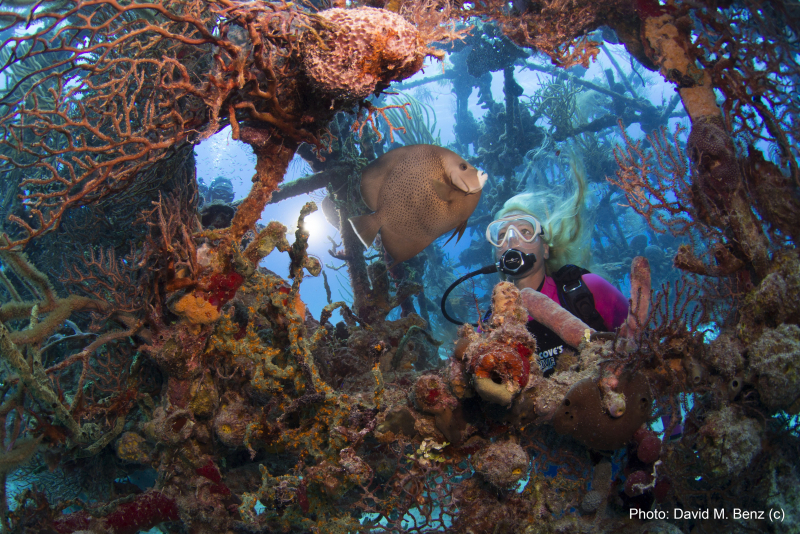
sportdiver.com 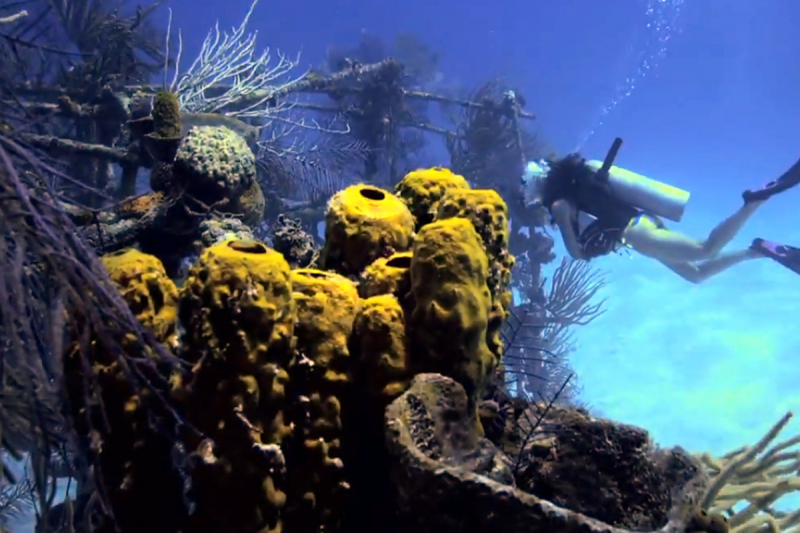
scubadiverlife.com -
Bimini Islands are positioned on the edge of the Gulf Stream, which travels between the Bahamas and the East Coast of Florida. Victory Reef is located south of Bimini on a 7-kilometer stretch of the reef with several dive sites ranging in depth from 9 to a somewhat more advanced 24 meters. Ideal for both novice and expert divers.
- A variety of depths suitable for all levels of expertise
- These reefs are popular with turtles, sharks, and rays.
- Visibility can often exceed 30 meters.
What you will see: Many green turtles, sharks, and rays, as well as a plethora of reef species, may be found at these dive spots around Victory Reef. Soft, hard, and sponge corals cover the reef, allowing divers to take their time and enjoy the variety of colors and species. The reef runs for a long way underwater, and there are several magnificent coral formations, tunnels, and swim-throughs to explore. The Cathedral is one of these, and it is included as a distinct dive site on this list.
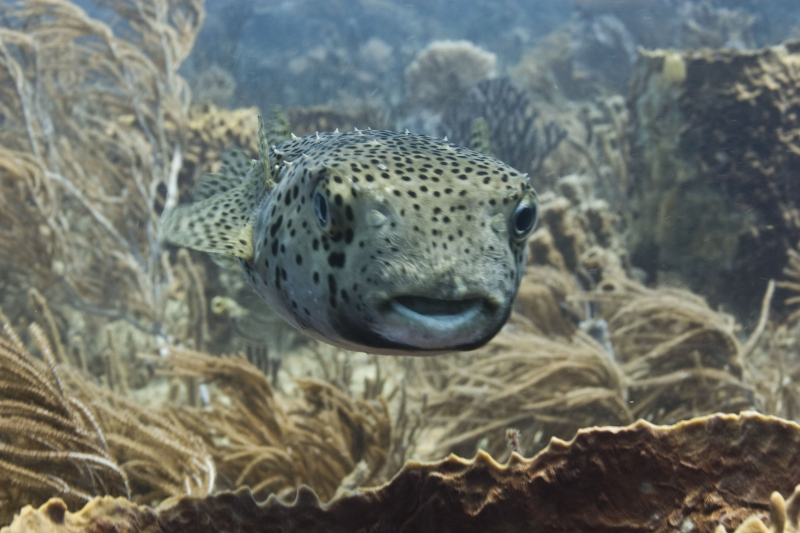
islamoradadivecenter.com 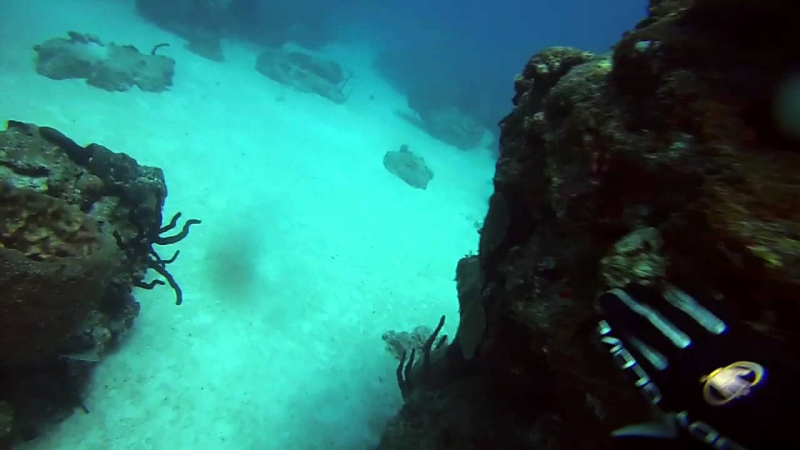
destimap.com -
Another wonderful diving spot for divers of all levels of expertise. The reef begins at 11m and drops to 15m, providing beginning divers with lots of opportunities to observe the magnificent coral. The reef, on the other hand, drops fast into Exuma Sound, where more experienced divers may investigate tunnels, swim-throughs, and other typographic oddities. Cathedral is one of the best dive sites in the Bahamas.
- Advanced divers should check out the swim-throughs.
- Beautiful, vibrant reef life
- There is a good possibility of seeing sharks, groupers, and enormous schools of jacks.
What you will see: This diving location draws several bigger fish species in addition to the usual reef critters and coral dwellers. This reef is surrounded by massive coral groupers, school jacks, and silversides. If you explore the deep blue, you could see a shark or ray drifting by.
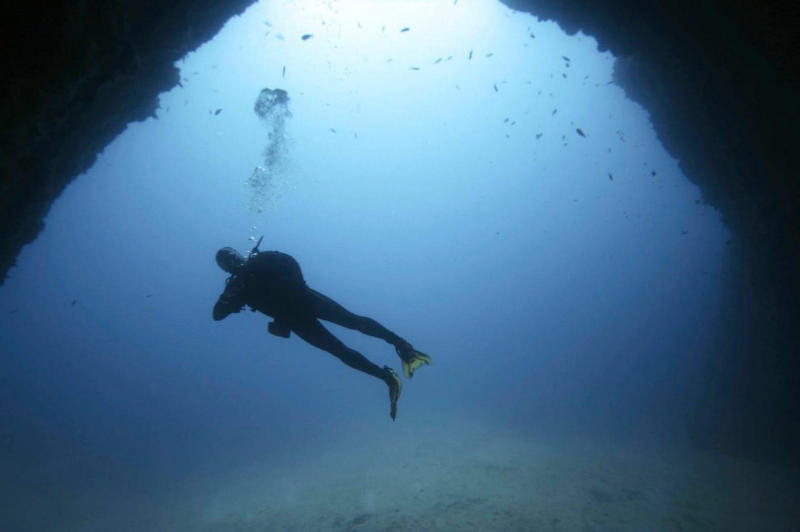
padi.com -
Andros, the Bahamas' biggest island, not only has amazing ocean diving locations but also beautiful interior blue holes. The Crater, an oceanic blue hole off Small Hope Island, is one of the best dive sites in the Bahamas. The dive is a beginner's dive that allows divers of all levels to explore the outside rim. However, if you begin to descend deeper into the blue hole and notice the black edges, it is suggested that only divers with advanced or higher certification continue.
- A one-of-a-kind crater dive with one-of-a-kind topography
- The opening connects the ocean floor to a cave system underneath.
- This terrain has created a haven for a variety of marine animals.
What you will see: Because of the crater's distinctive topography, it has become a portion of the ocean where marine species concentrate. Large sea turtles will be resting on the sand, eels, and rays will be swimming among the coral, and if you are a certified advanced diver, you will be able to observe numerous cave-dwelling animals hidden away in the dark. To obtain the finest view in all the nooks and crannies, carry a dive torch with you.
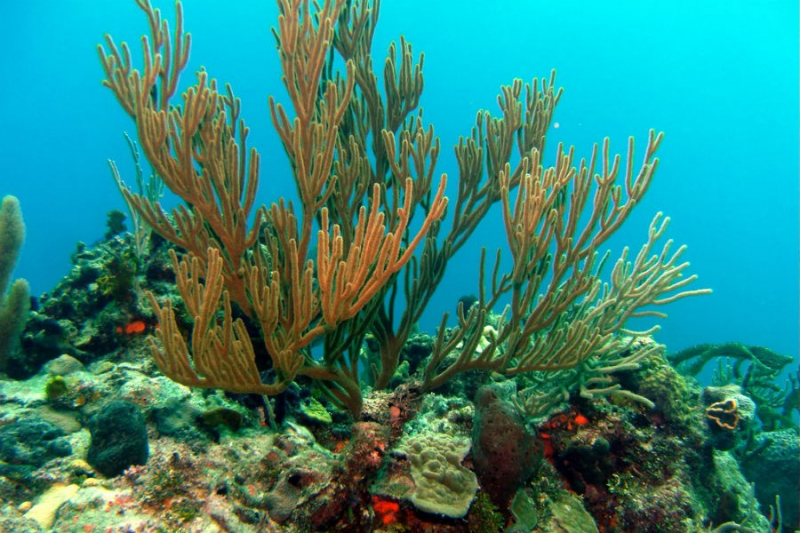
discovery-russia.ru -
You may explore the Ocean Wall by diving between the shallow reef and the edge of the Tongue of the Ocean. The "TOTO" is a 32km wide and 240km long u-shaped flat bottom trench that divides the east of Andros Island from New Providence. Its northern end is exposed to the open ocean, and it is bordered by reefs on all sides. As a result, it is a sanctuary for many sea creatures and has some of the highest biodiversity and seclusion from the open ocean.
- Possibility of diving along with the Tongue of the Ocean
- Some dive shops offer a two-tank dive to enjoy the stunning sight.
- A large variety of groupers, lobsters, grunts, and snappers are available.
What you will see: Many predatory fish take advantage of the shallow reef's rapid shift to 150m depth on perhaps one of the greatest reefs most outstanding wall dives in the world. Expect to encounter cruising groupers, eels, trevally, snapper, rays, and even some sharks.
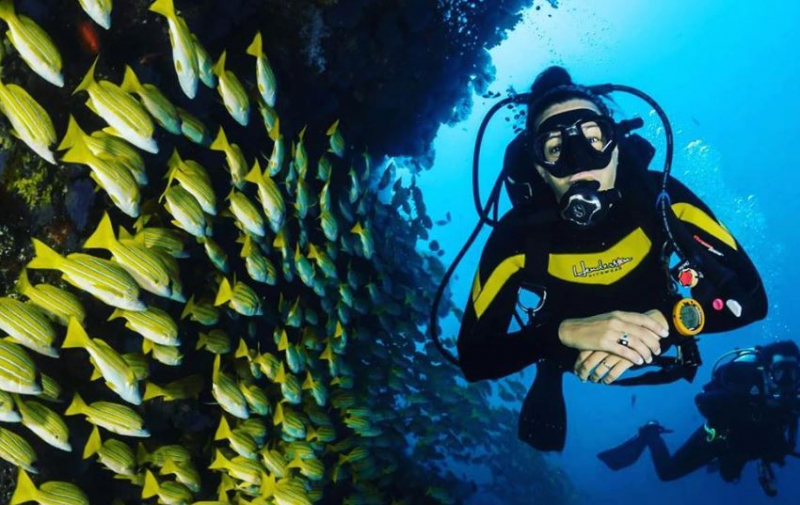
nemodivingcenter.com 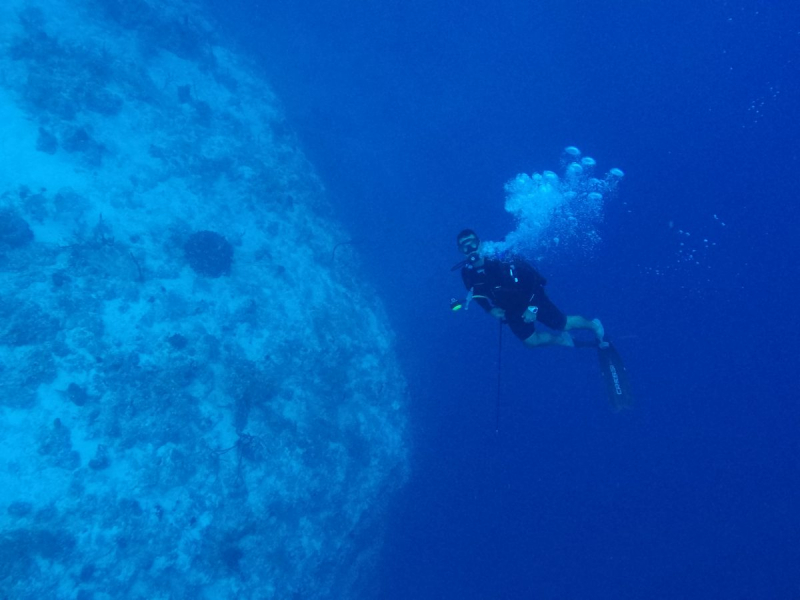
androsdiving.com -
This isolated dive location on Cat Island's southeastern point is an exposed spot best suited for expert divers. The dive location is often deeper than any other on our list and has stunning underwater pinnacles that attract marine life from a long-distance away. The currents can be severe as well, so check with your local dive operator and make sure you are fit and healthy for this dive.
- Megafauna is drawn to pinnacles towering from the seafloor.
- Large sharks and rays are drawn to strong currents.
- Dive spot best suited for experienced divers
What you will see: In the open ocean, the powerful currents in these places frequently attract pelagic sharks. Whitetip reef sharks are commonly found around pinnacles, where groupers and other shark species can also be found. Rays are another species that enjoy currents, so keep your eyes peeled for those beautiful creatures in the deep blue. In general, this dive location is popular among divers because of the incredible biodiversity that can be seen while diving here.
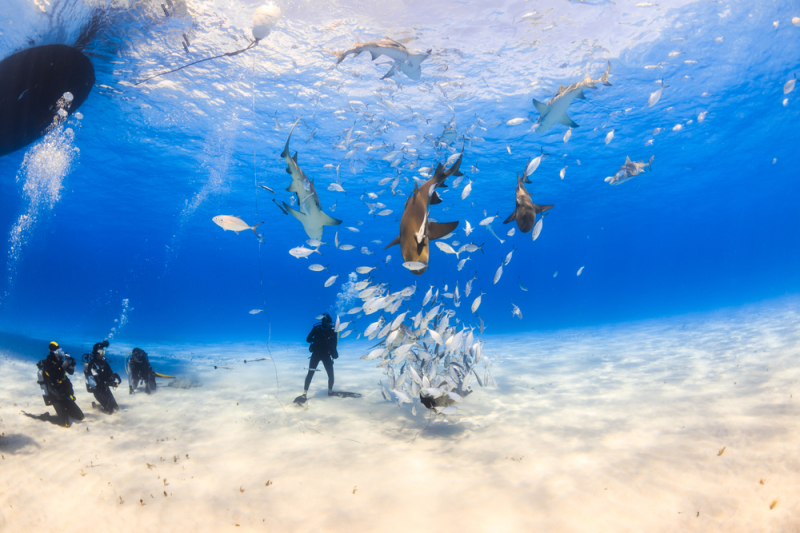
scrillydriving.com 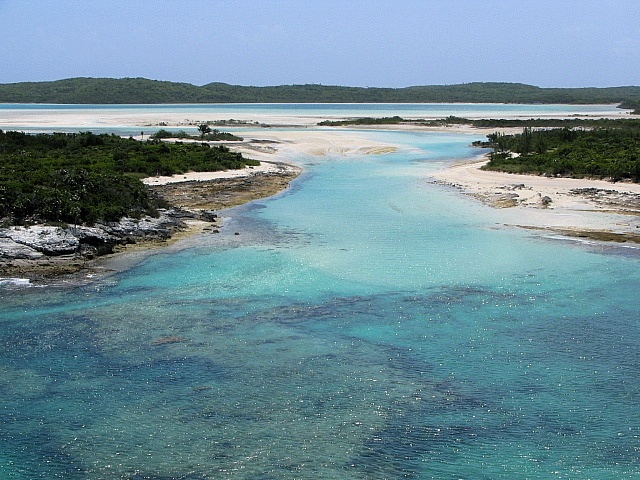
pinterest.com -
This diving location is without a doubt one of the most well-known Tiger Shark dives in the world. It's a 34-kilometer boat ride north of Grand Bahama's West End, amid a shallow area of sandy bottom. It is located on the western border of the Little Bahamas Bank and is well-known for its large tiger shark population. Visitors come from all over the globe to observe these magnificent creatures in the shallow 9m crystal blue waters. With clear water perfect for photographers and videographers, it might be the finest site to get up close and personal with these stunning apex predators.
- Shallow and clear water makes it ideal for photography
- A healthy population of tiger sharks makes it the best place to spot these majestic animals
- Easy dive means divers of all experience levels can enjoy it
What you will see: The Tiger Shark is a massive macropredator that may grow to be 5m long. Tiger shark populations are generally found in tropical and temperate seas surrounding the central Pacific islands. They feature a characteristic tiger pattern that disappears as the shark grows older. They are nocturnal, solitary hunters who feed on crabs, fish, seals, birds, sea snakes, and sometimes dolphins. They are renowned as the garbage eaters of the sea because they have been discovered to devour almost everything they come into touch with, even man-made things that remain in their stomachs.
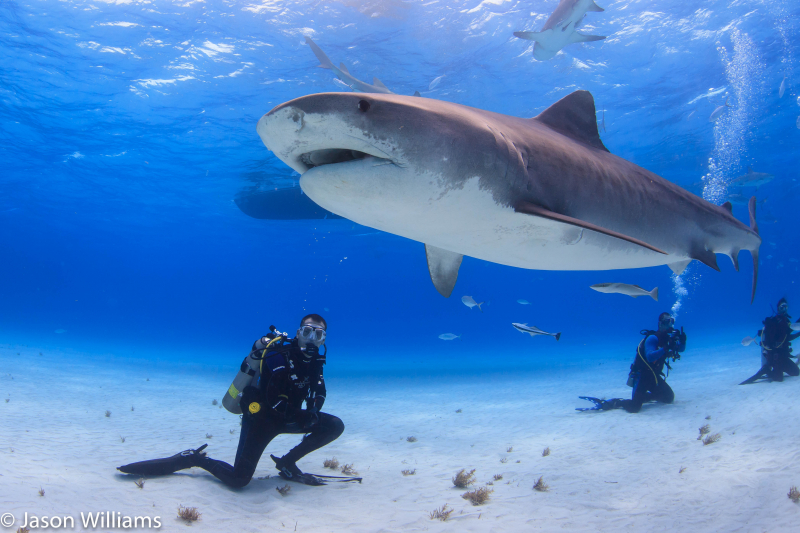
jacksonholewildlifesafaris.com 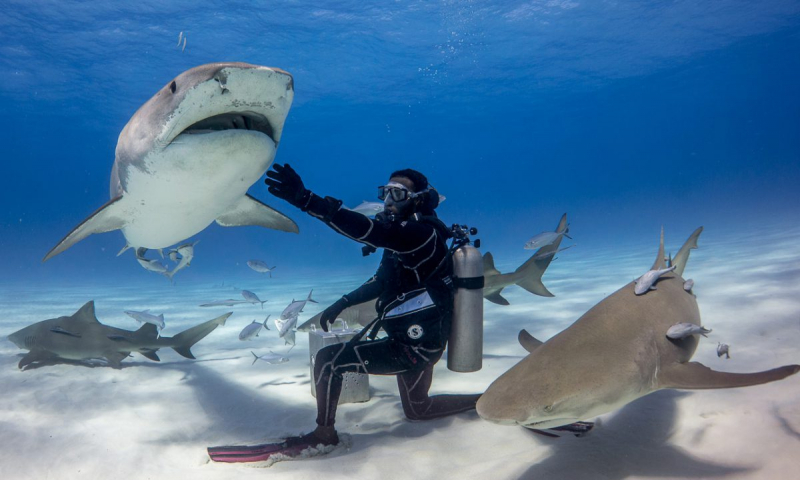
planetdiveholidays.com -
A manmade reef mixes the natural world's beauty with human creativity. This reef includes an old school vehicle that has been overrun by the aquatic environment. It is located in the heart of the Exumas Land and Sea Park. Jeep Reef is one of the many beautiful diving destinations in the Bahamas' Exuma Cays. It is situated in the heart of the Exuma Land and Sea Park. This reef is one of the most blooming you'll ever see, because of the continual stream that flows over it. However, diving there when the slack tide is not an issue.
- A coral-covered vehicle serves as an artificial reef.
- Strong currents may exist, therefore dive only when circumstances are calm.
- The currents do bring in larger fish as well as healthy coral.
What you will see: The jeep is now overrun with beautiful corals that are nourished by the normally strong currents that flow through this diving location. A wide range of aquatic creatures has come to call this artificial reef home. Swimming with red lionfish, blue tang, needlefish, barracuda, and pufferfish is a must.
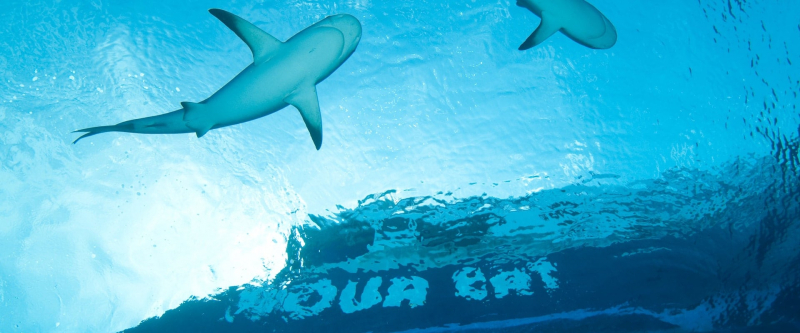
liveaboard.com 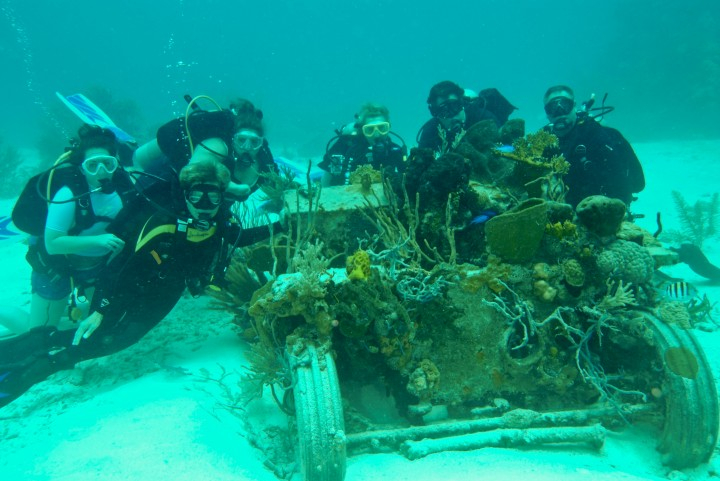
divewithmia.com -
The Exumas are one of the most beautiful island groupings in the Bahamas, consisting of 350 cays with breathtaking beaches. It is home to the Bahamas National Trust's Land and Sea Park, and just a bit north of it lies the Washing Machine dive site. It is a drift dive that begins at 4.5m of water and propels divers through a small passage in the reef to a depth of 15m. The somersault unwinds after a minute or two, releasing you over a vast patch reef and a gallery of sea turtles and nurse sharks tucked on the ocean floor. It's not every day that the roles are reversed and a dive becomes a spectacle for the water life underneath. You glide over the soft coral and your underwater audience like dancers at a curtain call, ending off an unforgettable adventure.
- Current motions that make you feel as though you're inside a washing machine
- The coral reef is beautiful and healthy
- Surrounded by some of the world's most stunning islands and cays.
What you will see: You'll encounter plenty of reef fish, crustaceans, and invasive lionfish, as with most coral reef dives. Look for vividly colored nudibranchs, well-hidden leaf fish, shy crabs, and other crustaceans.
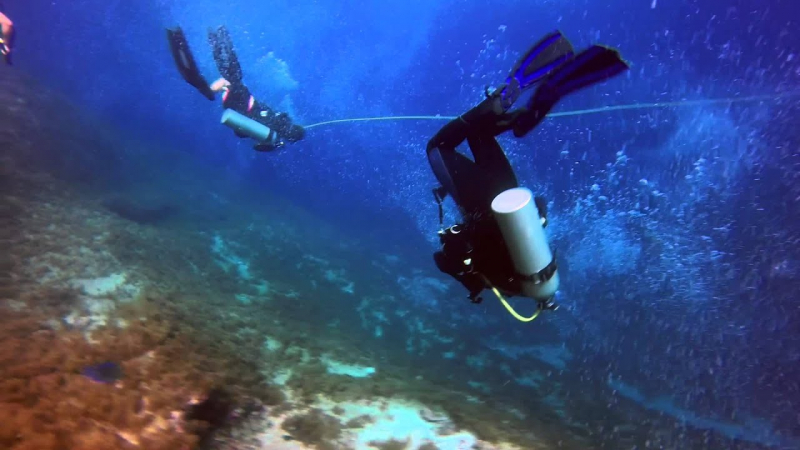
youtube.com 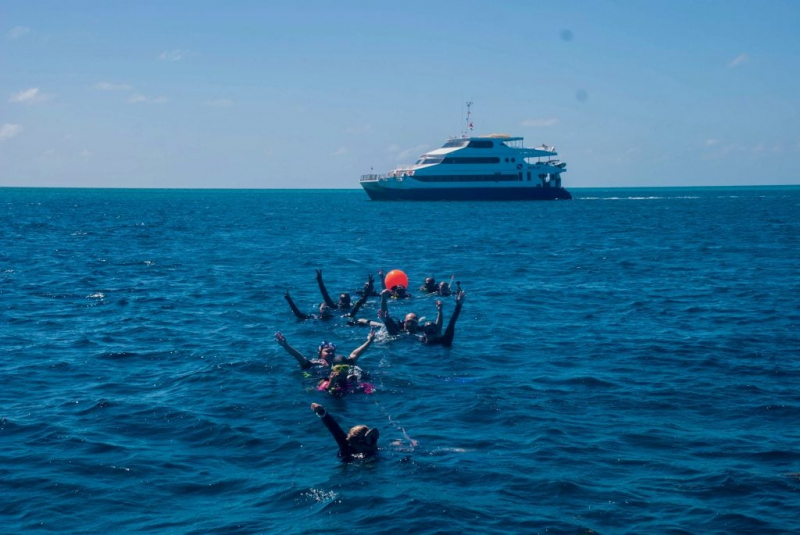
allstarliveaboards.com -
This diving location is located between Great Eleuthera Island and Current Island and is best dived on an incoming tide. The changing tide drives water down a tight tunnel between the two islands, resulting in a spectacular drift dive.
- Drift dive at high speed
- It's a fantastic way to observe stunning marine life and coral reefs.
- Because this is a tidal dive, you must first assess the circumstances.
What you will see: As you dive into the ocean, you'll notice that the drift dive propels you into a tiny corridor where you'll witness pictures of the Bahamian Reef whiz past. The best feature about a drift dive is that you only need to use a small amount of energy to reach a huge distance. The current remains strong for about 20 minutes, but after you travel through the narrowest area between the islands, it will diminish, at which time you may climb to the surface and repeat the drift.
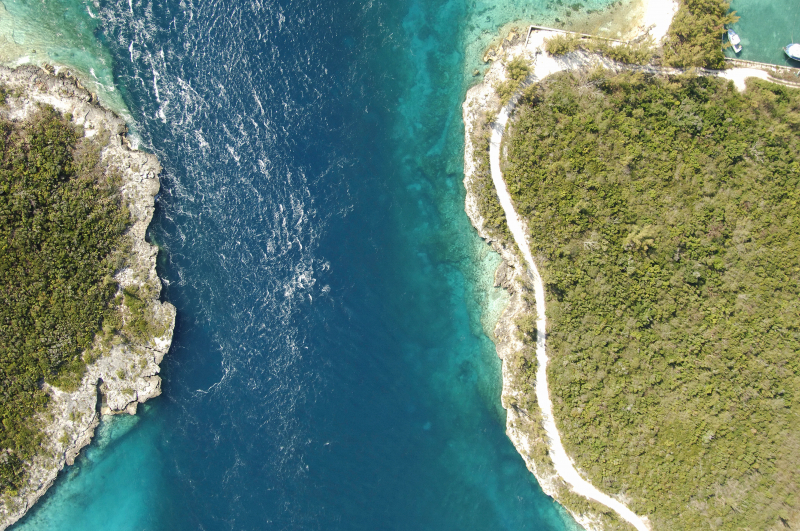
marinas.com -
This is one of the diving locations that are easily accessible from Long Island and where several dive boats visit on a regular basis. It has stunning drop-offs and wall dives, as well as healthy and vibrant coral reefs. At a depth of 10 meters, the top of the cliff is covered in coral heads before plunging straight into the blue to a depth of about 1500 meters.
- Excellent wall dive with healthy corals.
- Conception Island is easily accessible for a day diving excursion.
- Visibility is normally between 30 and 40 meters.
What you will see: The steep fall is covered in soft, hard, and sponge corals on top of the beautiful and amazing wall dive. The colors are stunning, but to get the full effect, grab a torch and illuminate the underwater environment to see the entire spectrum of hues on this strange planet.
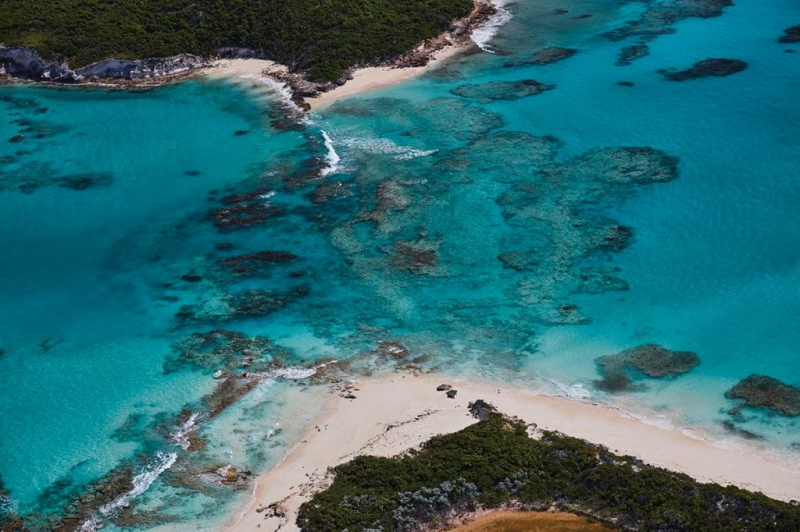
southernboating.com 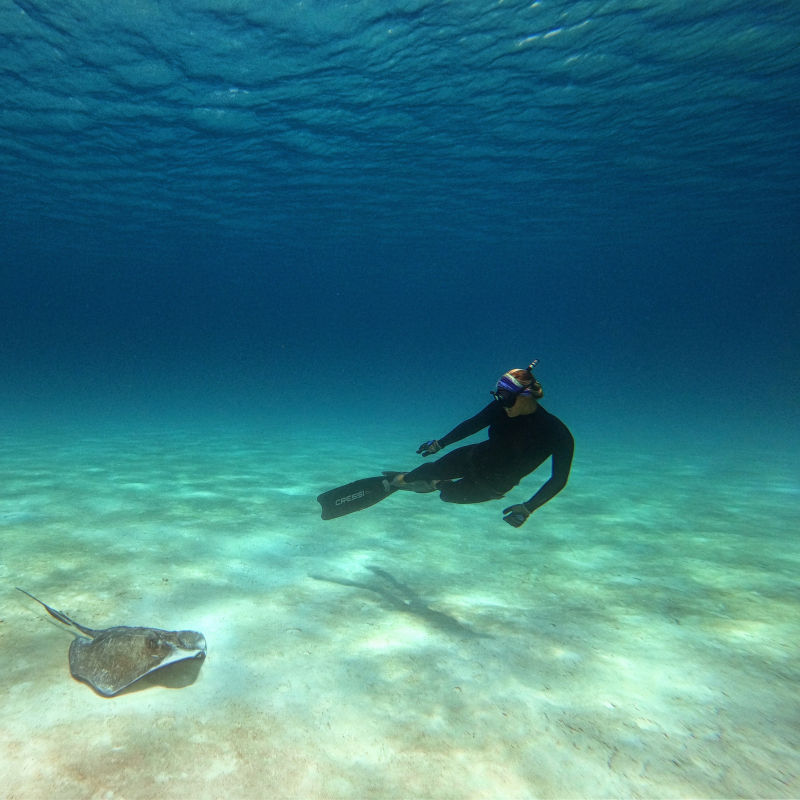
tulasendlesssummer.com -
If you enjoy wreck diving, the Wreck of the HMS Conqueror should be on your dive bucket list. The British Navy commissioned it as the first steam-powered warship. In 1848, an amazing steam and sail hybrid collided with corals on the south end of Conception Island. It has been on the ocean floor since then, collecting coral growth and drawing fish from all over. During this disaster, no persons were killed.
- Over 100-year-old historic wreck dive
- The dive spot is suitable for divers of all levels.
- Because of the number of years spent below, he is virtually unrecognizable.
What you will see: While you will be aware that you are diving on a British Navy wreckage, the ship is almost unrecognizable owing to saltwater deterioration. The wreckage pile on the seafloor contains canons, cannonballs, a propeller shaft, an engine, and a large number of petrified boards.
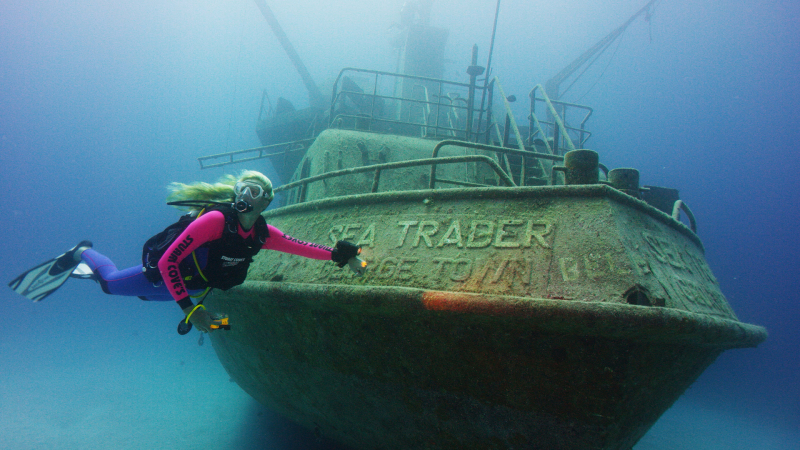
sportdiver.com -
Dean's blue hole, known as the deepest and most beautiful blue hole in the world, dips to 202 meters and is an excellent place for expert divers to explore the immensity of the ocean. Snorkelers may also appreciate the deep blue from the surface and watch diver bubbles rise from the depths.
- At 202m, this is the deepest known ocean blue hole.
- A strange underwater structure that scientists are fascinated by.
- A one-of-a-kind and exciting dive for divers at all skill levels.
What you will see: The azure water in the shallows turns to a deep dark blue towards the middle, where the hole in the ocean drops to 202 meters, as seen from the air. Divers like this one-of-a-kind location on the planet, and they appreciate the vistas from the top nearly as much as the tunnel in the ocean bottom while exploring under the surface.
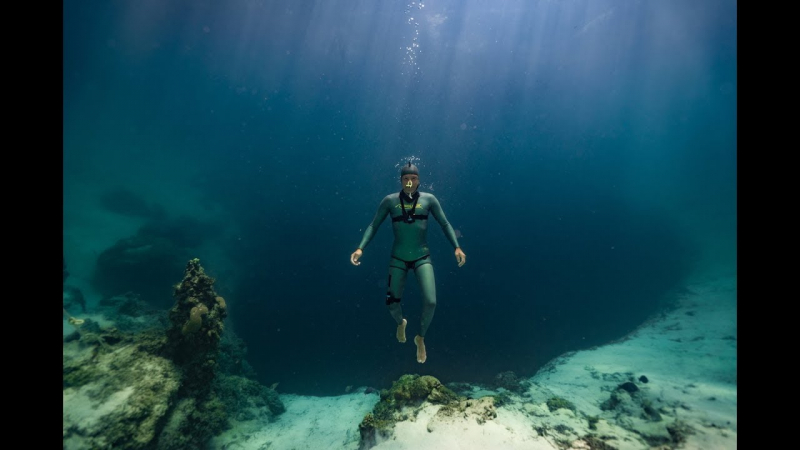
youtube.com 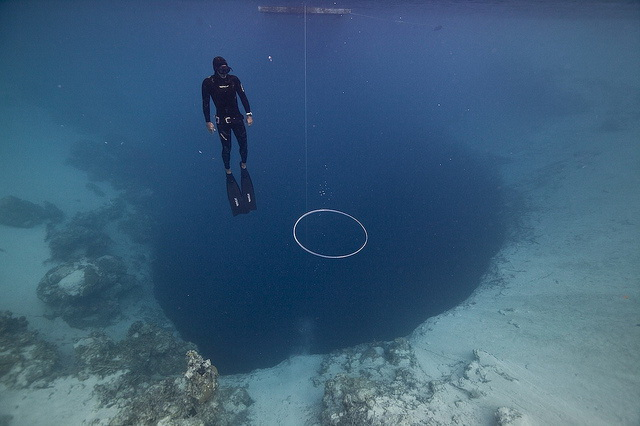
deansbluehole.org -
Three National Parks, Fowl, Sandy, and Pelican Cay, are located 100 miles from the Bahamas' northernmost island. It is a massive collection of reef constructions that face the Atlantic Ocean and flourish from the vast quantity of nutrients carried by the currents.
- Coral reefs that are somewhat remote and incredibly biodiverse
- National parks that are well-protected and have some of the best reef environments
- Because of the low current, this dive location is perfect for divers of all levels of expertise.
What you will see: These cays have some genuinely spectacular coral reef dives that both novices and expert divers may enjoy. Swarms of nudibranchs, crustaceans, and small reef fish swarm over the vibrant and robust corals. Grab your camera and put your macro photography talents to the test at this stunningly diversified diving location.
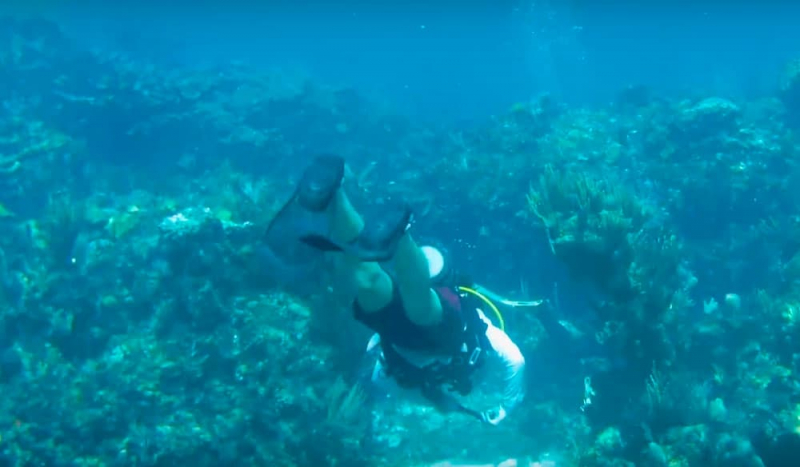
divein.com 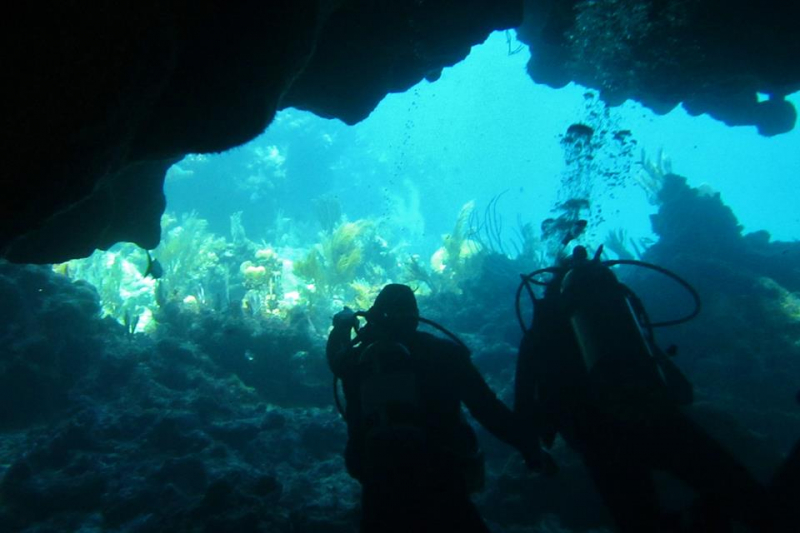
madurodive.com -
San Salvador Island is located in the midst of the Bahamas island chain, on the western coast. It is a stunning dive location with amazing overhangs, undercuts, and crevasses. The top of the wall is 12m deep and drops to roughly 40m. The visibility at this dive location is frequently between 30 and 45 meters, making it ideal for photographers and videographers. Swim along the wall in one way, then return to the boat via one of the many diving crevasses for the finest experience. The French bay wall is divided into several diving spots, including Grouper Gully, Devil's Claw, and Shark Alley, all of which are worth visiting.
- Fantastic dive site for night diving
- Tunnels, crevasses, and overhangs for experienced divers to explore
- Beautiful wall dive with extraordinary coral reefs and fish life
What you will see: This diving site's terrain is densely forested with elkhorn, staghorn, soft, and hard corals. Many reef species may be spotted swimming about the reef, including butterflyfish, surgeonfish, clownfish, and fusiliers.
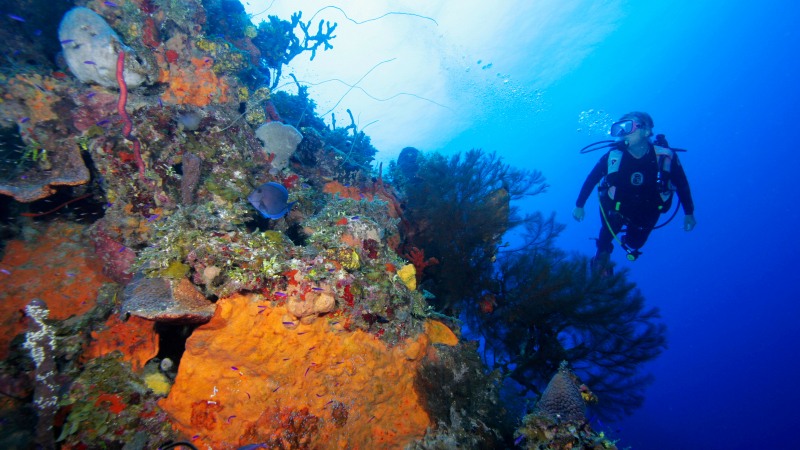
theculturetrip.com





















